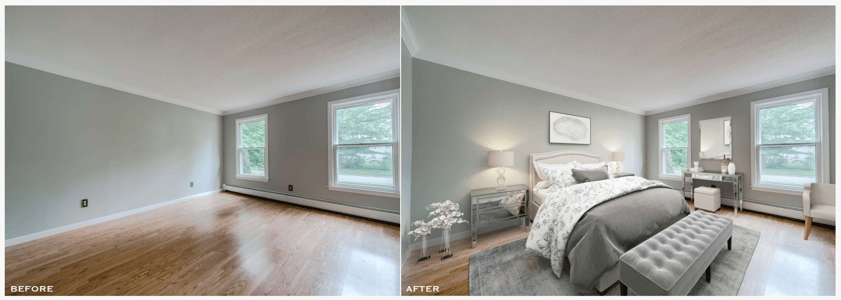In the same way that you would never show up to a job interview underdressed, you should be cautious to show off a property without staging it first.
Real estate is more than just selling a house; it’s about selling a lifestyle. You want the buyers walking into your open house to picture themselves living and thriving in the home. One of the best tricks at your disposal is the method of home staging.
What is home staging?
Home staging is the act of preparing a real estate property to be sold by arranging it to look as desirable as possible. This is usually accomplished through re-organizing the space and moving the furniture around in an aesthetically pleasing format.
In this article, we’ll discuss why home staging is important to your real estate business and share tips for staging a house successfully.
Why home staging is important
Aside from the arduous paperwork and never-ending negotiations, home buying is often an emotional process for most buyers. Put yourself in their shoes: when you’re making one of the biggest purchases of your lifetime, there’s sentimental value that you attach to that piece of property. Buyers want to visualize their life in the homes they are considering. Some may even be willing to pay more for a home that fits the bill.

It’s hard to ignore the data that points to the influence of staging on homebuyers: 83% of buyers’ agents reported that home staging made it easier for buyers to view the property as a potential future home.
As a marketing strategy, home staging taps into buyer emotions - that’s why it works.
Home staging tips
Effective home staging is more than just quickly re-arranging decorative pillows 30 minutes before an open house starts. There should be careful thought and consideration being put into your efforts. Otherwise, it’s not going to have a major impact.
There are professional home staging services available to sellers and real estate agents, but it’s not always necessary to hire them. If you and your client are concerned about the cost of hiring a professional, there are many ways to stage a home on your own.
Below, we’ve compiled a list of tips and tricks to help you out.
Tip 1: Declutter and deep clean
The first step in home staging is to get rid of unnecessary clutter and make sure everything is spick and span. Encourage your clients to put away items or decor that might be distracting to prospective buyers. You want to make it as simple as possible for people to visualize the home filled with their personal items instead. As an added bonus, decluttering will open up space and make the rooms appear larger.
Additionally, there’s no better time to deep clean the home. Nothing will put off a buyer quite like an interior that is dirty and poorly maintained.
Tip 2: Some rooms are more important than others
Some rooms, like the living room and master bedroom, deserve more attention to detail during the staging process. According to the National Association of REALTORS, these rooms, along with the kitchen, hold the most importance to real estate buyers when evaluating a home.
If you have limited time and resources to stage the other spaces in the house, that’s OK. Shift your focus to the rooms that will have the biggest impact on the buyer.
Tip 3: Explore virtual staging options
You also have the option to stage a home virtually. This could be a great option if your client has an entirely vacant home, or if going through the process of physically staging is too costly or time-consuming.
 Source: blue-sketch.com
Source: blue-sketch.com
Similar to traditional staging, you can hire a professional service to virtually stage the property for you or take the do-it-yourself route and invest in real estate virtual tour software.

Tip 4: Focus on maximizing space
There are small changes you can make a space appear bigger than it actually is. The first is decluttering, which we mentioned earlier. Another easy trick is to remove heavy blinds or drapes and replace them with something that lets more light in. Natural light makes a room look more open, airy, and spacious instantaneously.
Similarly, adding a mirror to a small space will not only add decorative flair but also opens the room up to make it appear brighter and less cramped.
Tip 5: Don’t forget about the outside
In real estate terminology, curb appeal refers to the outside appearance of a home. This includes details such as landscaping and the overall condition of the building itself. To put it simply, making a good first impression on prospective buyers starts here. The property should be well-maintained on the outside so buyers are intrigued and excited for what’s to come on the inside.
Dress for success
By itself, home staging isn’t going to magically close any deals for you. However, it’s clear that staging is an influential marketing tool that can help a home sell faster and possibly at a higher price point. Don’t underestimate the power of aesthetics in the ultra-competitive real estate market.
Home staging is most effective when combined with other marketing tactics. Discover more real estate marketing ideas to round out your selling strategy.
 by Izabelle Hundrev
by Izabelle Hundrev
 by Izabelle Hundrev
by Izabelle Hundrev
 by Izabelle Hundrev
by Izabelle Hundrev